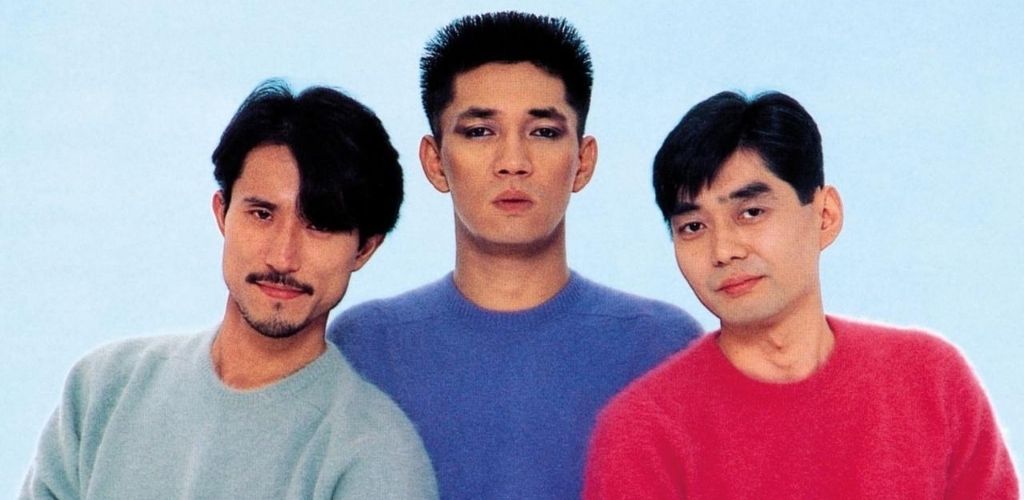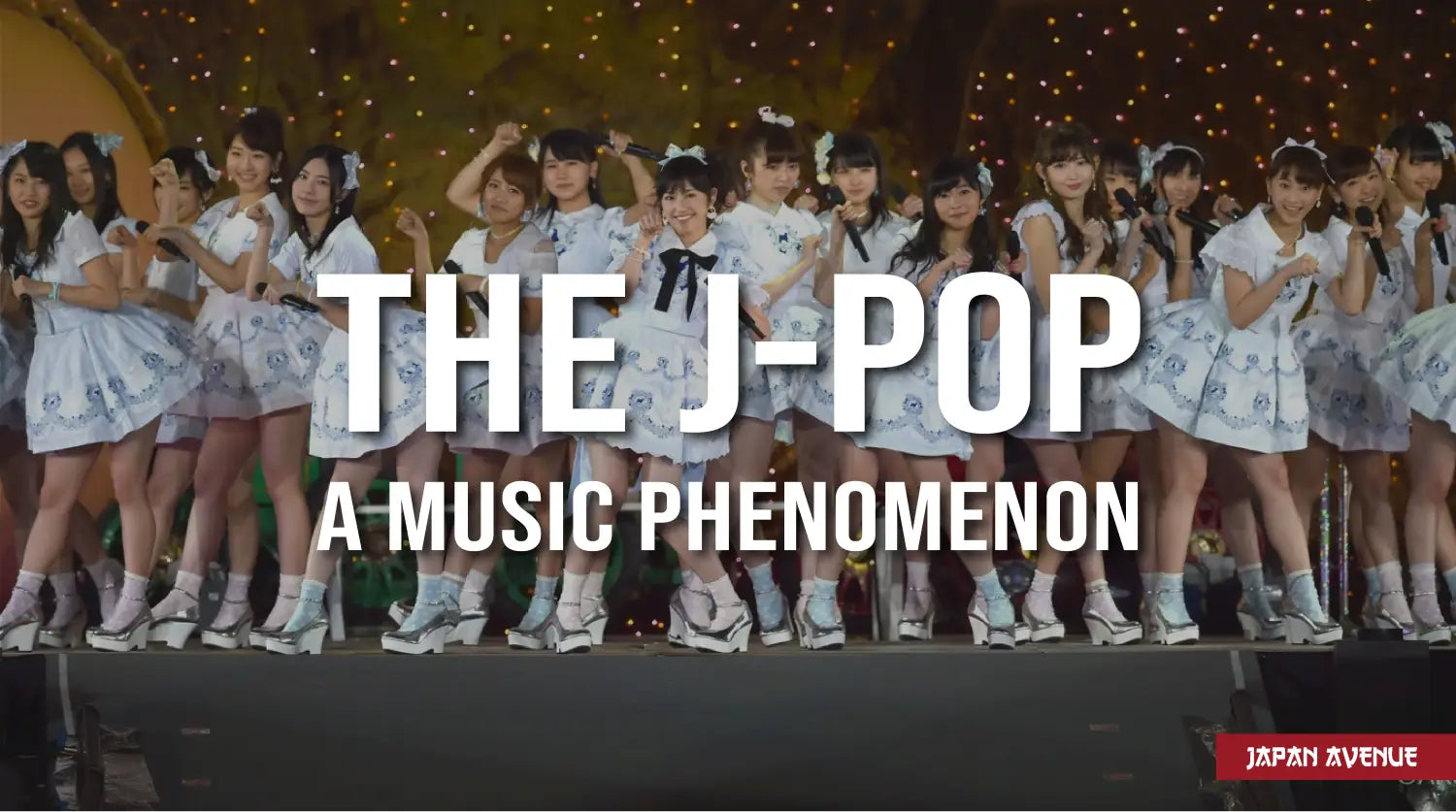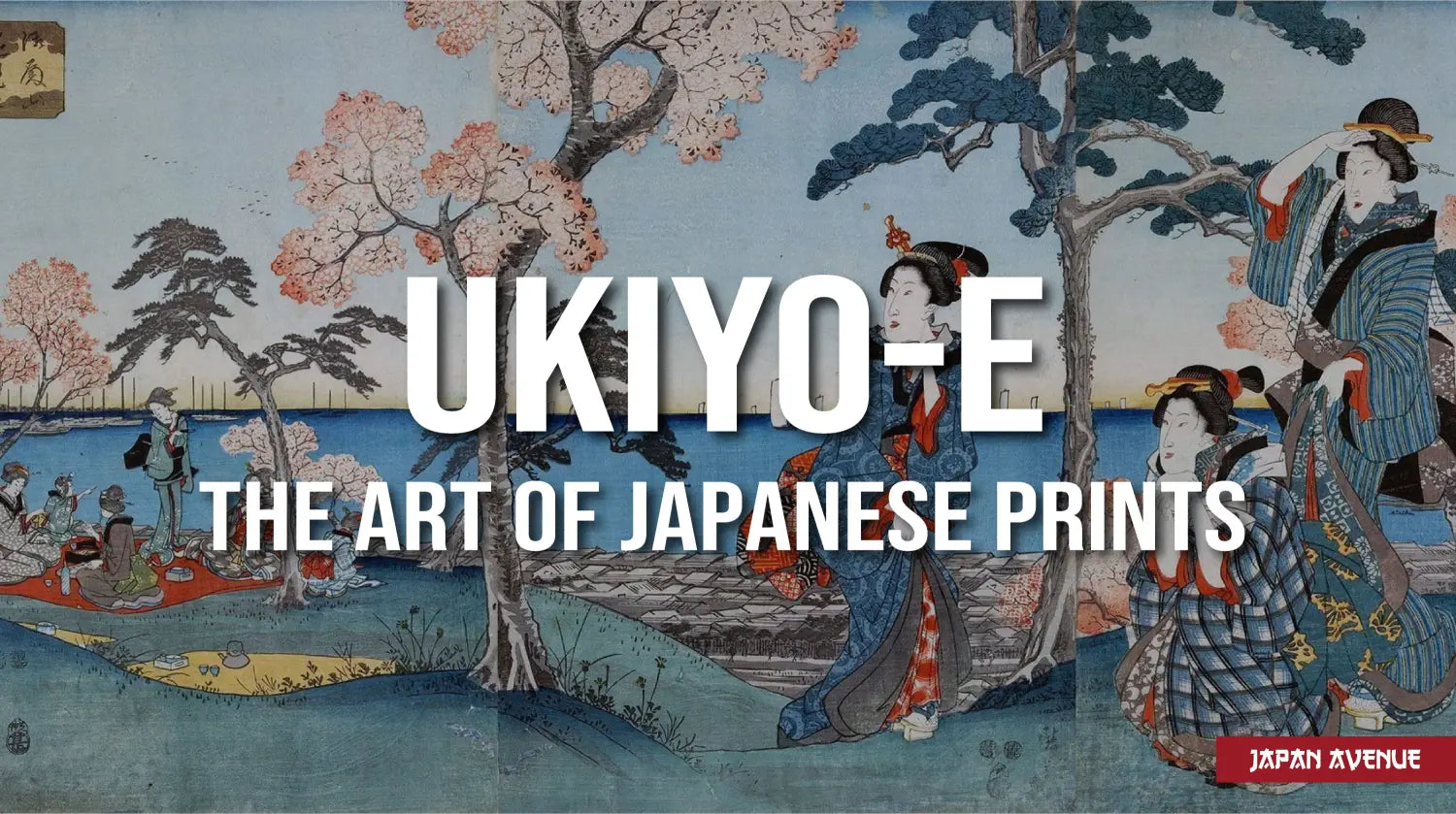Japanese bands with good looks, a pinch of high energy songs, well choreographed dance routines, wild fans 😻 and a healthy dose of marketing, that's the secret of J-pop. This commercial music style is a true phenomenon in the archipelago, such that it dominates the market. As a result of the marketing industry, Japanese pop is omnipresent in media, carried by japanimes, video games and karaoke.
So, where does this musical genre come from? Who are these ephemeral stars of J-pop, called idols in Japan? Let's learn about the world of Japanese pop bands without further delay.
🎧 J-pop, a mix of western and local music
Appeared in 1988 in the Land of the Rising Sun, J-pop, just like its Korean cousin K-pop, is the result of local traditional music to which western trends have been added. This style of music is part of the 4 main music genres in Japan, along with J-rock, J-rap and enka.
The term J-pop for Japanese popular music, was launched by the radio station J-Wave, to designate local music influenced by Western fashion. This genre is inspired by rock'n roll, disco, dance, electro, soul, hip-hop and RnB trends. With Japanese lyrics, directed to teenagers, J-pop is based on the major American and European trends. Thus, we can distinguish various musical styles going from the overexcited to the more classical melodies.
The origin of J-pop
Derived from 19th century Japanese folk music and influenced by Western sounds, J-pop is the result of historical and cultural evolution.
During the Meiji era, the first popular music trend was known as enka, which refers to street singers. These artists were accompanied by traditional Japanese instruments.
Later on, with the appearance of the radio, western music emerged in the archipelago. In the 20's, Jazz was very much appreciated in Japan. At the same time, European classics were increasingly played on the radio. As time went by, certain popular songs from abroad were covered by the Japanese in their native language. This was the birth of the kayokyoku genre. Traditional enka music is enhanced by Western sounds.

Japanese music album covers of the kayokyoku style (60s-70s).
The rise of kayokyoku
Under American occupation, enka, representing Japanese values, was put aside. People preferred the kayokyoku. Moreover, new music styles appeared in Japan such as Boogie-woogie, blues and country music. The enka loses its traditional DNA and mutates towards a more Western style while keeping the Japanese language. The appearance of the television will also contribute to the development of kayokyoku.
The legacy of rock'n roll
In 1952, with the success of African-American artists such as Louis Armstrong, jazz came back in force in the archipelago. However, local musicians started to play more country music, which was more accessible.
The late 1950s and the fame of Elvis Presley marked the arrival of rock music in Japan, when a country band covered one of his famous songs. Similarly, the Beatles inspired many local pop artists. Thus, the sixties marked the arrival of rockabilly, electric guitar and pop music.

Yellow Magic Orchestra, a Japanese synthpop band, better known as YMO.
On the American model, some Japanese artists mix traditional music with rock sounds. The band Happy End which influenced a lot the Japanese music, is one of them. In the 70's, some bands such as Southern All Stars or YMO marked the history of J-pop. Moreover, the number of translated songs exploded.
The advent of idols
At the same time, artistic agencies appeared and were on the lookout for new talent. They are the ones that create "idols" and set up the marketing codes to guarantee the success of their careers. They ensure the scouting, auditioning and intensive training of future stars.
Among the pioneers, the agency Johny and Associates, specialized in the recruitment of male artists. Little by little, the dull copies of foreign stars were replaced by local stars, giving birth to the first Japanese boy bands of the 70s. The melodies were conceived by famous songwriters and the lyrics were always sung in Japanese in order to be as close as possible to their audience.
The 80's were marked by female figures. During a whole decade, idols looking like young model girls revolutionize the J-pop in the Land of the Rising Sun. The phenomenon fades in the 90's when the Japanese economy is at its highest and then returns a few years later with the financial crisis. Under the influence of nostalgia, Japanese people think back to the idols of their adolescence. This is how the group Morning Musume revived the craze for idols in the 2000s. Among them we can mention the famous producer Yashuki Akimoto, who created giant female groups.

Namie Amuro, J-pop singer and Japanese idol in the 90s.
Under the influence of the crisis, record companies are reviewing their marketing strategy by proposing free services to the media in exchange for visibility. Thus, idols appear everywhere on television and in advertisements. Stars of this time are distinguished by urban influences, in line with the kids of the crisis. The singer Namie Amuro perfectly embodies this break and brings a new impetus to the 2nd generation of idols.
💓 J-pop idols in Japan
Many young Japanese people between the ages of 16 and 25 apply for the auditions. They are chosen on their physical appearance before following an artistic training preparing them for their job as a star. Once the group is formed, a whole system of media coverage follows. At the end, few idols manage to make a place for themselves in the world of celebrities before falling back into complete anonymity. Their careers are usually very short and often end before their majority or following a press scandal.
The boy bands or girl bands with limited time contracts sometimes live together to create a bond. They undergo an intensive training in dancing, singing and other disciplines, customized by their manager, and they spend a lot of time working on their image. Then, when they are ready, the group signs a contract with a record company.

The members of the J-pop group AKB48.
In addition to their artistic activities, the stars manage their fame on social networks. They become real business machines, chaining performances and photo shoots for the manufacturing of derivative products. Sometimes, they also shoot commercials or host TV shows. Everything is carefully calculated so that the group will make a hit. Note that the profits go to the entertainment industry. That's right, many times the stars only receive a simple salary.
During their performances, the idols pretend to be single because they have to be available in the eyes of their fans. In general, they are seductive personalities, over-mediatized. Their slightest gestures feed the press and rumors. Unlike American or European stars, they maintain a close relationship with their fans by privileging real contact with them.
🙆 Unmissable J-pop groups
👯 AKB48
The J-pop group AKB48 with more than 100 girl idols today, obviously is the most popular group in Japan. Represented by 48 young girls, AKB48 performs in their own concert hall. The program includes lively songs, simple choreographies, and popular topics with a pop feel. AKB48 is made up of several teams, with an evolving membership. The concept was conceived by producer Yasushi Akimoto, who created the group in 2005 along with other similar entities. Today, these popular girls in Japan are setting records for albums and singles sold. Their secret: The girls build fan loyalty by maintaining a close bond with their fans.
🎤 Hatsune Miku
A virtual superstar with long blue hair, Hastsune is an avatar that came out of a voice synthesis software. Originally the pop star was created by the Yamaha brand to represent Vocaloid 2. As a true icon of J-pop, she became a key figure of pop culture in both Japan and Europe. With the ability to reproduce and synthesize a human voice, the singer can perform 100,000 songs created by fans or composers. In addition, she has already collaborated with international stars such as Lady Gaga and Pharell Williams. Hatsune Miku is very famous in the Land of the Rising Sun and regularly performs in Europe. During her concerts, her hologram is projected on the screens.
👸 Kyary Pamyu Pamyu
This young singer is the epitome of the kawaii style. Aged 25, she is known worldwide thanks to her song Pon Pon Pon. The Japanese Princess of Pop likes to play on paradoxes by mixing cute and creepy elements. In her clip, we can notice brains, in a decor worthy of a trip on acid. The singer is also a model and fashion blogger. Her extravagant style and doll-like appearance as well as her psychedelic universe seduce many fans. Besides, the clip Pon Pon Pon has more than 160 million views on Youtube.
📀 Perfume
This group, formed in the year 2000, certainly is one of the most famous in Japan and abroad. It is composed of 3 singers from the Actors School Hiroshima: Nocchi, Kashiyuka and A-chan. Their career took off in 2007 thanks to the single Chocolate Disco which brought them to the forefront of the scene. In 2012 they signed a contract with Universal Music, opening the doors to international success. Perfume is a music style full of dance, synthpop, techno and house sounds. 20 years later, the female trio remains a major group in Japan. The keys to their longevity: an innovative approach to pop.
💪 Deadlift Lolita
Created in 2017, this idol duo is a mix of J-pop and metal that brings together Leadybird, an Australian transvestite wrestler and Reika Saiki, a Japanese bodybuilder who is also a wrestler. In the video clips, Deadlift Lolita is a mixture of bodybuilding and totally crazy kawaii. A supercharged sound that combines the innocence of pop and the power of death metal. Both original and hair-raising, the band offers a muscular stage performance. A shocking duo!
Are you a fan of J-pop? Let us know in the comments what your favorite J-pop band is! 😃👇



